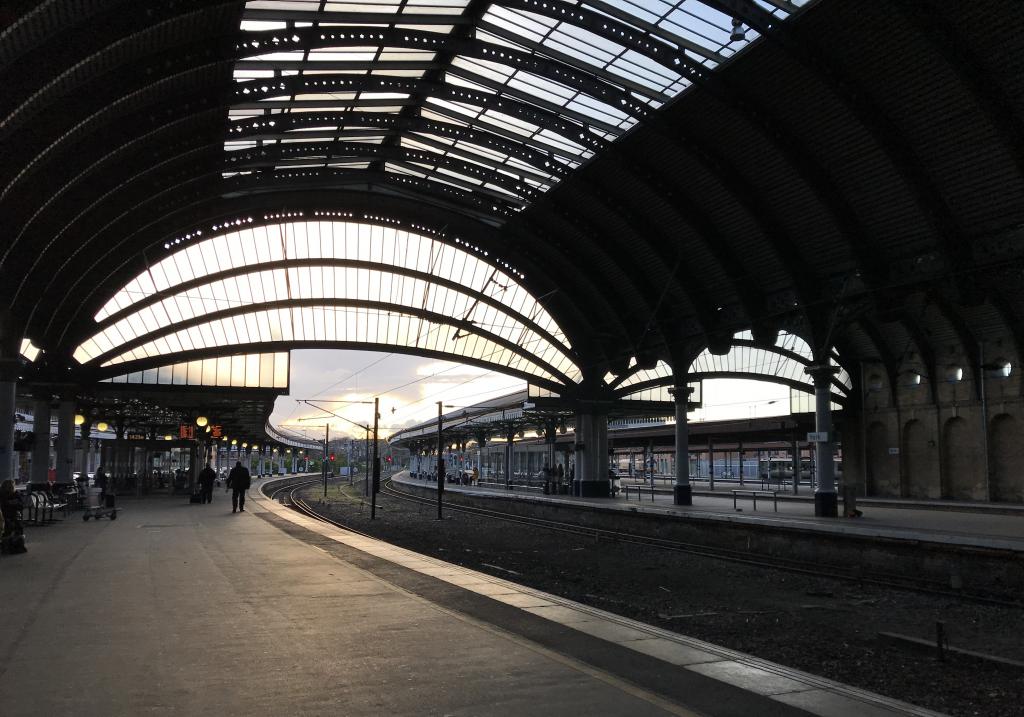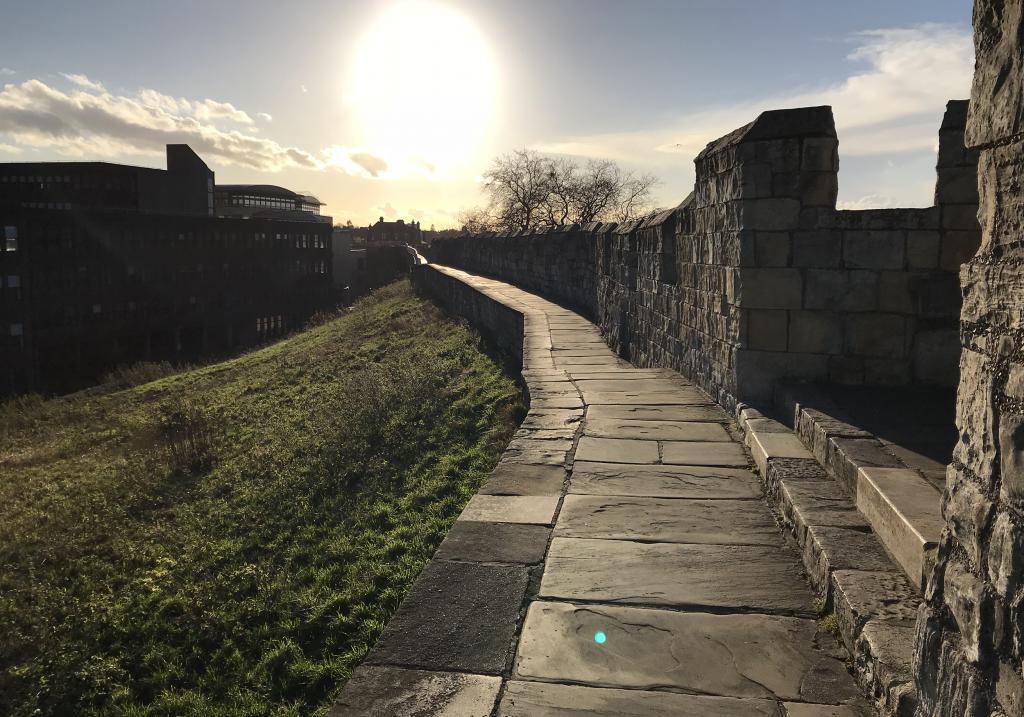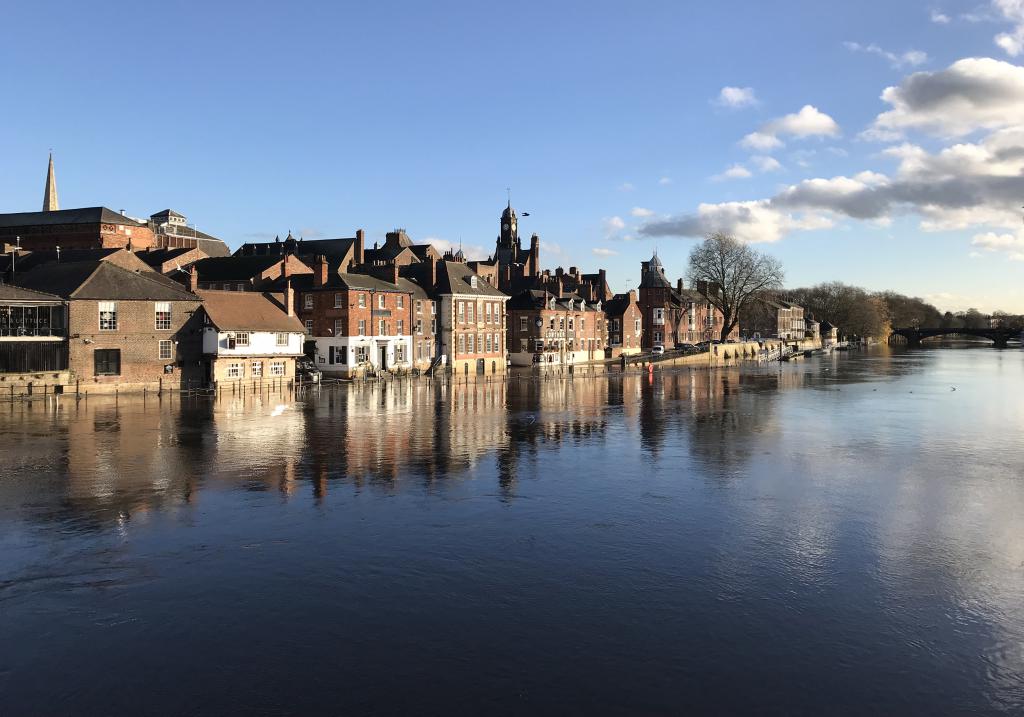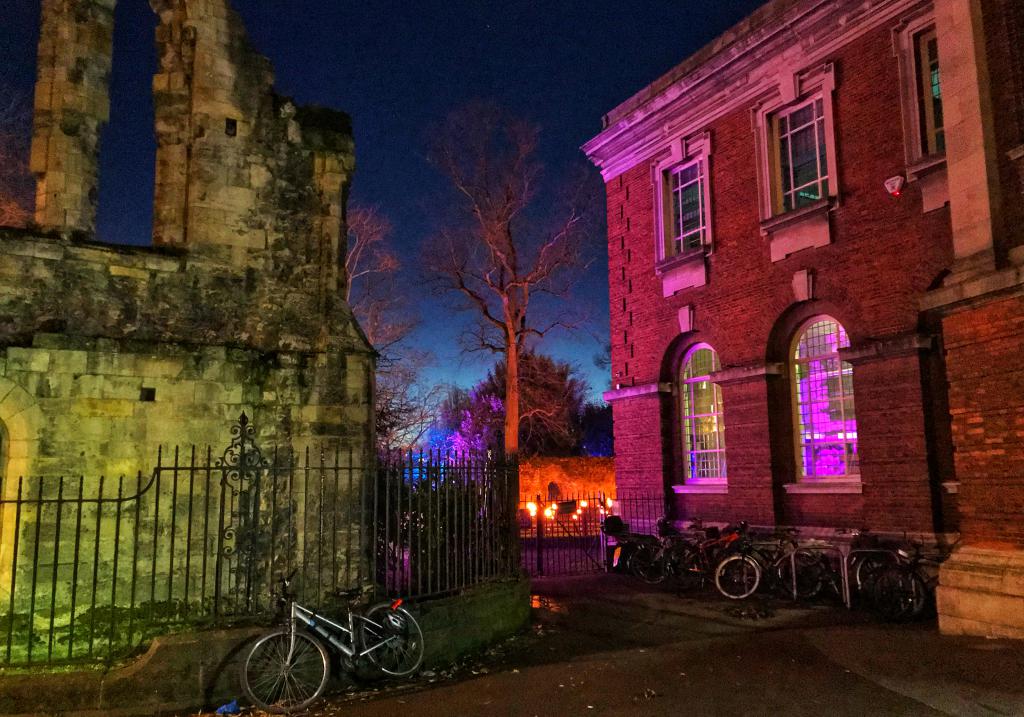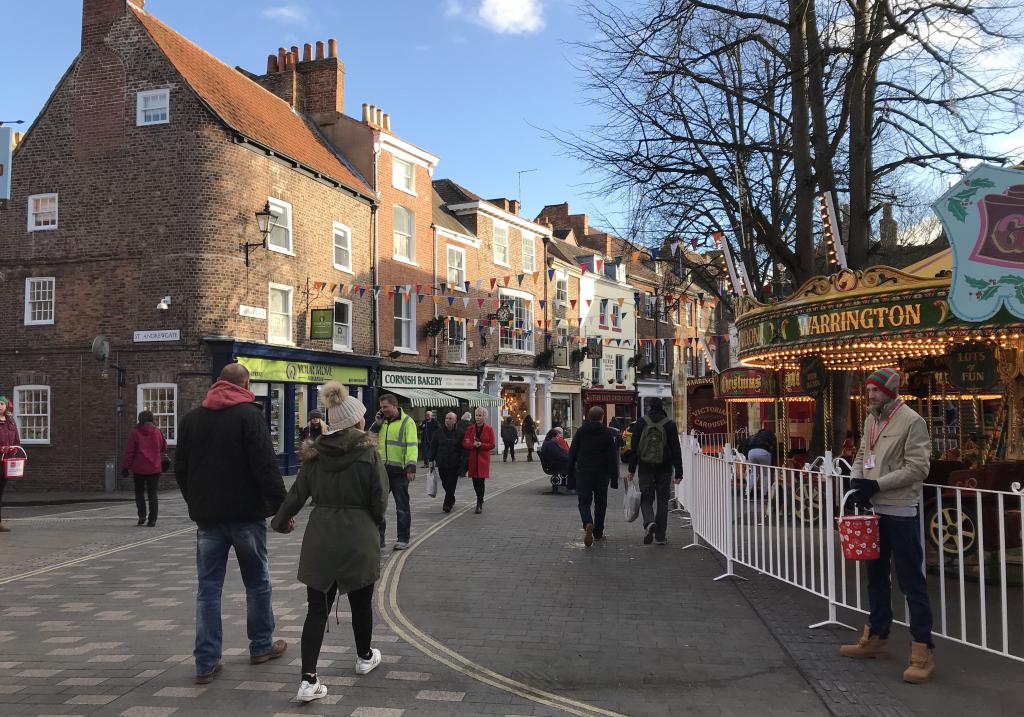In some late night and early morning downtime from my recent visit to Derwenthorpe, I was very keen to see York, a city that my Node colleagues were surprised to learn that I have never visited! As such, I left the office with a long and detailed running route devised by the team, with plenty of planned stops to take in the city’s unique historic environment. I was also keen to consider what could be learnt from York as an historic, riverfront, university city that shares many characteristics with Worcester, where Node is currently undertaking a city centre masterplan.
Arriving by train, I learnt that York makes an instant impact with its grade II* listed railway station that announces the city’s importance the moment you disembark through its immense roof structure: it was the largest station in the world when it was completed in 1877. I was impressed to see that place-specific messaging begins immediately: York chocolate stalls and cake stands greet you before you exit the station, whilst interpretation panels and plaques reveal the stories behind historic features of the station architecture.
The city is compact: a benefit of the historic wall that for a significant period contained development entirely and still today has a psychological enclosure of the city core. A key benefit is the resultant walkability of the city: it is entirely possible to walk between all of the major features of interest within 15-20 minutes. Much of the city is pedestrianised or vehicle restricted, with the streets given over to allowing safe movement on foot or providing space for activities, such as markets stalls, which were in abundance across the city centre in the run up to Christmas.
The city is bursting with history and interest, which is for the most part carefully and thoughtfully curated, giving it a sense of integrity and cohesion. It seems to occupy a sweet spot of being popular as a visitor destination without being overrun by tourists – and successfully draws on its heritage whilst remaining a vibrant economic centre. Critically, it manages to do all of this without falling into the ‘heri-tat’ trap (the commodification of heritage to the point at which it entirely loses authenticity).
As you traverse the city, the wall and its gates give a sense of continuity and cohesion to the environment: a repeating visual reminder of York’s historic integrity. The wall remains surprisingly intact: indeed it is possible to walk 3.4km of its perimeter on the structure itself.
The wider built environment too is remarkably intact, with very limited modern infill. Having the city almost entirely to myself in the early morning darkness (6am in late November) certainly added to the atmosphere, with the Medieval and Georgian townscape, cobbled streets and lack of vehicle traffic, collectively contributing to a feeling of truly stepping into history.
Although I was grateful for my running map, I quickly discovered I had no real need for it: the city is a highly legible urban environment, with towers and spires defining views; signage consistently directing toward features of interest – and frankly, every road providing something new and interesting to look at! Later in the day, I noted that cycling is also clearly popular, particularly amongst the student population. Despite this, there is little in the way of defined cycle infrastructure: simply a movement network that is sufficiently cycle-friendly to promote cycling as a logical means of transport.
The city has a strong and positive relationship with the River Ouse, which flows through its core. There are many crossing points over the river, allowing easy and convenient movement, together with features of interest immediately abutting it, with cafes, pubs and pedestrian movement routes along both banks. The river was in flood when I visited, and it was interesting to see how adjacent development had been designed to be sacrificial to the flood water, with ground floor parking areas open to allow flood water in.
At night, the city came truly alive, with visitors walking gloved hand-in-hand through the narrow streets. One thing is for certain: York knows how to do Christmas! From the lighting displays in the Museum Gardens, the traditional fairground with helter skelter in Kings Square, diverse and tasteful Christmas markets, to the artificial snow billowing from the upper floors of The Shambles, the city captures the festive spirit in its entirety. Children and adults alike appeared totally enchanted by the environment: I was no exception!
Learning from York
There are many lessons to learn from York that can be applied more widely. Here are a few:
- Consistent messaging relating to the history of place. York’s wall provides a recurring visual cue, but there are other more widely applicable ways of delivering this aim, from public realm materials, pavement trails, signage, interpretation and events.
- There is also significant scope to embrace the brand identity of place-based institutions. In York, stalls, cafes and ‘York’s Chocolate Story’ visitor attraction reinforces the connection between place and product. And who doesn’t love chocolate?
- Stories: ghost stories and walking history tours are widely available and well used by visitors, reinforcing the historical messaging of the city.
- The value of embracing the river: York has frontage development that integrates with the River Ouze, together with multiple means of crossing the river, which allow both sides of the bank to play a role in the development of the city.
- Multiple options for hotel accommodation at all budgets provides opportunity for a wide range of visitors to experience York
- Availability of high quality housing close to the city promotes the city as a great place to live, not just visit.
- Embracing education providers as a key function of the city centre: the student population adds significantly to the life of York.
- Reduction and or removal of vehicle traffic from city core as a means of giving priority to pedestrians and encourage greater time spent lingering in streets and spaces, rather than just passing through.
- Although clearly desirable, specific cycle lanes are not necessarily required to encourage cycling (if there is not space to provide them): a safer, slower vehicle environment will serve to promote this. Safe and secure cycle storage is however essential.
In summary, York is an evocative, interesting and incredibly friendly city. It may have been my first visit, but it certainly won’t be my last!


